At the base of vision
André Cepeda likes to look around, to wander through familiar places and explore their semantic and aesthetic reverberations. The city where he lives, Porto, has been his privileged setting, often to signal border territories, marginal and exclusion zones, seen by the artist in their spatial and material peculiarity but also as symptoms of historical conditions, as fragments of a geography constrained by (social, political, and moral) hierarchies that prevent any type of communitarian cohesion or convergence.
The images in Depois ("After") date mainly from the last two years. Throughout this period, Cepeda strolled through various areas of the city, particularly at night, when the urban rhythm slows and movement (machines, people, language) abates. This is when life simulates its own suspension, as if transformed into a photograph. The collection of images suggests a physical – and mental – journey through various sites in a city where human presence has been suspended. During this journey, this meander, André Cepeda photographs a wide range of subjects, including deserted streets, the façades of buildings, rudimentary constructions, monuments, ruins, and abandoned materials and objects in settings permeated by melancholy and a sense of emptiness, where nothing appears to happen. It is a view that is harsh and sensitive, meditative and critical, which reacts to space, matter, and light, bestowing certain places and objects with a character that is at once familiar and strange, banal and mysterious.
As with most of his previous work, these images fall outside the category of photography that embraces everyday moments and sudden fleeting gestures, elements that inspire a significant body of urban photography. At the same time, it is not photography that seeks a generic, distant, cold, and abstract representation of the city. On the contrary, in André Cepeda's photography there is a clear intention to work according to a principle of territorial intimacy, to borrow Jean-François Chevrier's apt expression, an approach based on a productive connection between a (spatial, experiential, and ethical) relationship with the subject matter and the analytical and speculative possibilities that the image offers.
In these photographs, the places tend to be depicted according to a more specific rather than general perspective. There is a sense that the artist favours scenes that are devoid of human presence, as if an oblique movement towards a paradoxical and distended space-time were necessary, immune to the concrete nature of gestures and actions, so that a particular city, a particular time, a particular state of things, may be discerned and examined in all its breadth and complexity.
Cepeda is interested in places within the (his) city as both a theme and a singular domain of perceptions, like two completely indivisible dimensions that confirm the existence of a fundamental relationship between seeing and reality, as if reality did not exist without the vision that forms and frames it. Consequently, there is a clear intention on Cepeda's part to establish a consistent and fertile congruence between the type of place and the type of photographic approach. There is an apparent preference for an approach that resembles the formal parameters of documentary photography, as a genre that values the descriptive, objective, and realistic qualities of photographic representation; in other words that is primarily motivated by technical precision, clear and precise image construction, and the rejection of any type of pictorial expressionism. As such, the images aim to redefine the meaning of photography, since they aspire to be no more or no less than photographic images, taking as a given the extraordinary capacity of the camera to heightening our awareness and perception of what surrounds us.
However, a more thorough analysis of André Cepeda's photographs reveals that they are not entirely documentary, much less objective, by virtue of their rhetoric of marrying descriptive competence with the speculative, aesthetic, and redefining power of the image. Thus, it can simply be said that André Cepeda departs from objective image conventions in order to attain a more extensive and fruitful subjectivity. His images are unstable and transitory, which is unquestionably a quality because it fulfils one of the main expectations of artistic practice, the opportunity for a view that is different, extensive, and "obtuse" (according to the meaning attributed by Roland Barthes), capable of arousing something in the viewer that which is more subjective, intuitive, and projective. In André Cepeda's photographs, the documented referent, the concrete subject, the here and now of the image, is not the central element. One has to reflect on what the image arouses, on its presence value, on the resonance it creates. They are images that have an impact at the level of reception, as a peculiar block of space-time, reminding us, as Thierry De Duve remarked, "that owing to its indexical nature, the photographic sign cannot be subject to semiotic analysis without the phenomenological or even the existential getting stuck to its skin, so to speak. In the image of the real transformed into surface, not only as a reference, over there, but also as existence, here."
Most of these photographs stand out for their naked simplicity. It is as if the subjects present themselves, without any artistic mediation. The coldness and precision of the photographic record and the meticulousness of the image composition are, therefore, means that are given to underscoring the limitations and paradoxes of photography itself, in the sense of an interpretation that is not enclosed within the boundaries of the image, like a play on uncertainties that invites the spectator to reflect on other key issues within our collective and individual conscience. In this way, André Cepeda's images remind us that, as spectators, we do not passively gaze; on the contrary, we are also (or above all) visual producers.
It is a direct and forthright contemplation that avoids obvious aestheticisms or formalisms and that subsumes an ethical and aesthetic stance: ethical because it rejects any grading of moral and social values; aesthetic because it dismisses thematic, symbolic, and artistic hierarchies, fully adhering to the idea that everything is a subject for photography. Thus, far from being an objective and rational approach, experiencing André Cepeda's photographic vision is akin to embarking on a sensitive and subjective exploration that awakens a new and immensely rich perception capable of demonstrating variations and oscillations in the appearance of things, frequently playing with the differences and tensions between figuration and abstraction, as can be seen in the diptych formed by two black and white photographs: on the one hand, an orthogonal view of part of the façade of a building with a reticular design; on the other hand, a photograph of a wall with a shapeless black stain, probably smoke marks accumulated over several years. Then there is the photograph of various fluorescent lights on a wooden counter or the image of a decorative detail on a concrete wall at the entrance to a building. Walls, architectural features, and objects are represented in such a way that they appear like drawings or sculptures. In these cases, the intuitive and “visual” gaze demanded by a drawing (as an experience of forms) or a sculpture (in its focus on material, volume, and weight) appears to be foremost in the photographer's mind, as a creative inference in this kind of plot that Cepeda weaves into ordinary yet alien places, between impenetrable darkness and intoxicating light, with unknown spaces and apparently unusual objects.
However, it is important to underline that the strange and the unusual are not exactly inherent qualities in things and places, although some images are able to depict more perplexing and unwonted situations. The impression of strangeness is triggered by us as spectators and emerges from our sensitivity and perceptibility. It arises from a mental predisposition which, aroused by the image's freezing of space and time, magically blurs the borders between real and unreal, known and unknown, reinforcing a disturbing ambiguity, as if they were emanations of a hypnagogic state, the altered consciousness between wakefulness and sleep, in which the individual is more receptive to the emergence of other frequencies of vision. It is as though the photographer, during his peripatetic forays into the city, were recombining viewpoints – those of the anthropologist and the artist, the wanderer and the sleepwalker, the historian and the critic, a gaze created by crossovers and oscillations between states of perception and conscience that cannot avoid superimposing reality and fiction.
Nothing appears to happen in these places. Where are the inhabitants and the bystanders? There are no discernible movements or gestures. There is no narrative. A petrified world, deathly silent, where all that remains are spaces, constructions, and objects that point to a prior history. An emptiness that disconcerts us and induces us to look even when there is apparently nothing to see. They are photographs built on silence and inexpressiveness, encouraging an inner shift towards an openness to the myriad of interpretive and psychological games at play. In the first instance, because, as pointed out by Michel de Certeau in The Practice of Everyday Life, "places (...) are like the presences of diverse absences. What appears designates what is no longer there and what can no longer be seen. (...) There is no place that is not haunted by many different spirits hidden there in silence, spirits one can 'invoke' or not". And because both the fixity of the photograph and the apparent emptiness suggested by the image are always transformed by the spectator, who attempts to give them life, which is always the case when the eye and the mind are confronted by fixity and emptiness.
What are the experiential and perceptive horizons of a photographed place? How does photography, with its limitations and capabilities, have the prerogative to reconfigure the appearance of the territory and, consequently, provoke a perceptibility that is not confined to an experience of the visible? What are the underlying relationships between the city, its representations, and the social actuality? These are overarching questions for André Cepeda and many other contemporary artists, for whom tackling urban realities entails the ever more relevant and vital challenge of addressing the phenomena of appropriation and transformation of space, and recovering the incidents, quandaries, and echoes of mankind's history and its representations.
These are not new preoccupations within the field of photography. What is evident is the unique role that this medium has assumed and continues to assume when experimenting with the limits of the visible, summoning and merging various temporalities as a means of (re)examining history. Of the countless examples in the history of photography, we will only cite the renowned photographs by Jacques-André Boiffard for André Breton's novel Nadja (just to allow us to trace a lineage that will be embraced by André Cepeda). A series of photographs of a deserted Paris, which functions as a non-official map of the city, each place photographed for having been the setting of a radical or revolutionary event in history. To bring up these spaces entailed the creation of another city, a city stripped of the charm of bourgeois life, a counter-archive of capitalist urbanity.
Thus, André Cepeda's wanderings (strolls, tours) can be considered a process, an exercise in confrontation and integration of body and space, eye and mind. They are also about considering the possibility of forming new insights, a viewpoint with heuristic motivations, i.e. that seeks a different understanding of the nature of things, of knowledge (or rather non-knowledge) that favours the perceptible and the subjective. This is an experiential and conceptual attitude, which inevitably likens Depois to the legacy of an artist like Robert Smithson, in particular his seminal work A Tour of the Monuments of Passaic, New Jersey (1967). Initially published in the magazine Artforum, the work comprises a series of photographs of various “monuments” on the banks of the Passaic River, and a text that constructs a narrative describing the location and the return to his birthplace a few months before his 30th birthday. The work evokes (through the images and text) “monuments” of an alien land, in this case the land of his birth, as if it were a different planet, a place subjected to a series of semantic experiences, testing the physical and conceptual parameters, pitting one against the other. In short, examining the place and seeking an active understanding instead of succumbing to the complacency of familiarity.
This series of works contains a variety of subjects and photographic types. One could begin with two images that appear as though they are intended to mutually gaze at each other, two types of representation, two opposing worlds: on the one hand, an oblique view of the trunks of a cactus under a faint light and an enigmatic blue; on the other, the detail of an architectural structure on a building. Nature vs. culture, entropy vs. formal and material order, gradual growth vs. abrupt growth, night vs. day, conscious vs. subconscious; the conflict suggested by the confrontation of these two images delineates, to some degree, the horizon and the scope of the relationships intertwined within this place of images (in the sense that Cepeda's images construct a new place, relatively discordant with the sites that he photographed).
They are images that aspire to be processes, relationships between the visible and the speakable, means of playing with the before and after, with territorial identity and alterity. This way of creating and envisioning photography aligns Cepeda's work with a notable trend in contemporary photography that leans towards speculative and fictional exercises, visual and poetic expression, and the value of indetermination in the works, as legitimate (and necessary) forms and means of representing and addressing our experience of reality.
Some images are more ambiguous (especially in the way they assume the disruptive effect of light), while others present a more direct and literal stance, without ever sacrificing their transitory potencial. The confrontations between interior and exterior, between public space and private space, the idea of housing or shelter, also integrate the overarching themes that permeate this visual territory, as symptoms of a city marked by a radical transformation of its functional dynamics and forms of occupation.
Particularly significant for Depois, since it constitutes its point of departure, is the series of eight photographs of a large sculpture by José Rodrigues. The sculpture is entitled Monumento ao empresário (Monument to the entrepreneur) and was unveiled in 1992 by then Prime Minister Aníbal Cavaco Silva. It is a work with post-modern architectural traits but which stands out most for its significant ideological overtones, a tribute to an economic growth model that would supposedly drive Portugal's development to the levels of the Central European countries. These photographs by André Cepeda never reveal the entire monument, nor its location on the intersection between Avenida da Boavista and Avenida Marechal Gomes da Costa. What we see are points of view, at times fragmented, at others close to sections of the sculpture. To the detriment of a comprehensive view, the photographs allow us to appreciate the characteristics of the materials, the mirrored glass, the iron, the wood, the stone, and the concrete. Cepeda took these photographs over several months in 2014 and 2015, a period when the public arena in Portugal was plagued by the financial scandals and the effects of the deep economic and social crisis that continues to afflict various sectors of Portuguese society. Accentuated by the focus on traces of vandalism and the deterioration of the materials, these eight images produce a fragmentation of the sculpture, configuring it as an anti-monument, a critical reversal of the homage to the entrepreneur (also as the personification of an economic, political, and social programme), highlighting the artist's interest in combining aesthetics and historical scrutiny.
This example, like so many others that are apparent in Depois, demonstrates a clear attempt by André Cepeda to bring the equivocal effects of photography to bear: on the one hand, we see that the photographic images establish and document materials, objects, and situations, sanctioning them with the weight of reality; yet, along totally different lines, there is this sense of the erosion of confidence in the power of representation to correlate with the real world. One sees that the images are not limited to freezing and recreating the existing world, that there is an illusory dimension (magical, hallucinatory, and surreal) which allows the image to potentially create a new, parallel reality.
All the Depois photographs undoubtedly evoke a bleak landscape, condemned to desertification, abandonment, and oblivion (recurring themes in Cepeda's work, particularly in Ontem ("Yesterday") and Rien ("Nothing"). However, this should not distract us from the essence of these photographs. They are about what remains of humankind, within the sphere of the city, in public space, in architecture, on the ground, in objects, even when there is nobody left to tell us how things were. They are images of rubble and remains – of the lives of its inhabitants, of the accomplishments of its constructors –, places where the human presence seems to have been replaced by its ghosts.
It is a gloomy scenario, a city confronted with the vision of its dystopic destiny. One could conjure images of André Cepeda when recalling the words of the stalker in the homonymous film by Andrei Tarkovsky, the man who drove people to an apocalyptic and mutating place called the Zone: “Our moods, our thoughts, our emotions, our feelings can bring about change here. And we are in no condition to comprehend them. Old traps vanish, new ones take their place; the old safe places become impassable, and the route can either be plain and easy or impossibly confusing. That’s how the zone is. It may even seem capricious. But in fact, at any moment it is exactly as we devise it, in our consciousness… everything that happens here depends on us, not on the zone.”
Depois is, in essence, a work about what remains, but also about our desires and what we are prepared to see in and make of the images, to reclaim the need for an ethics of observation and reflection on all the sites of abandonment and oblivion.
Sérgio Mah
At the base of vision text by Sérgio Mah was writen for the Book "Depois" published at the occasion of the exhibition at Chiado Museum
At the moment André Cepeda has a solo show curated by Urs Stahel, at MAAT - Museum of Art, Architecture and Technology in Lisbon, until January 2021
His last book published by Pierre Von Kleist Editions, can be ordered here
Solo exhibition at Cristina Guerra Contemporary Art in 2021
Developing a new project for Rialto6 to be presented in September 2021
André Cepeda was born in Coimbra, in 1976. He currently lives and works in Lisbon, Portugal. In 2012, artist in residence at the FAAP, São Paulo, as the recipient of a scholarship granted by the Calouste Gulbenkian Foundation. Cepeda was shortlisted for the Paul Huf Award, Foam Fotografiemuseum, Amsterdam (2011); Prémio BESPhoto, Lisbon (2010); and the EDP Foundation New Artists Prize, Lisbon (2007). He has been showing his work regularly, in Portugal and abroad, since 1999. He has since then made multiple artist residencies and received many commissions, among which stand out the 2010 Lisbon Architecture Triennale, EDP Foundation (2014), the Fundação de Serralves (2014) and Gulbenkian Foundation (2019). In 2016 he was artist in residency at the Residency Unlimited, in Brooklyn NY, in the context of the partnership Atelier-Museu Júlio Pomar/ EGEAC and Residency Unlimited, NY. He is currently working in a new exhibition and book project with Urs Stahel, to be presented in 2020.
Among his many exhibitions stand out: Cristina Guerra Contemporary Art, Lisbon; Benrubi Gallery, NY; Fridman Gallery, NY; Galeria Pedro Oliveira, Oporto; MNAC – Museu Nacional de Arte Contemporânea, Lisbon; Kasseler Fotoforum, Kassel; Gallery INVALIDEN, Berlin; Espace Photographique Contretype, Brussels; Standard/Deluxe, Lausanne, Switzerland; MARCO — Museo de Arte Contemporánea de Vigo; Le Bal, Paris, France; Haus der Photographie, Hamburg; Wohnungsfrage — Haus der Kulturen der Welt, Berlin; Serralves Contemporary Art Museum, Oporto; CGAC—Centro Galego de Arte Contemporánea, Santiago de Compostela; Calouste Gulbenkian Foundation, Paris; Museu Oscar Niemeyer, a Caixa Cultural, Rio de Janeiro and MASP — Museu de Arte de São Paulo, Brazil.
His work is represented in multiple public and private collections.
André Cepeda founded Blues Photography Studio in 2005 where he produces work for many photographers, instituitions and gallery’s, printing, scanning and photographing. www.blues.com.pt. Since 2008 he runs Inc. Livros e edições de autor, a bookshop specialized in artist books. www.inc-livros.pt. André Cepeda gives a one week workshop every year at the Photography School CEPV, Vevey, Switzerland.
André Cepeda is represented by Cristina Guerra Contemporary Art, Lisbon, Galeria Pedro Oliveira, Oporto and Benrubi Gallery, NY.
Grants/Residencies/Commissions:
2019
Gulbenkian Foundation
2018
Representação Oficial Portuguesa na 16ª Exposição Internacional de Arquitetura – La Biennale di Venezia
EDP Foundation
2016
ATELIER-MUSEU JÚLIO POMAR/ EGEAC E RESIDENCY UNLIMITED, NY
2014
Serralves Museum of Contemporary Art, Porto: work commissioned for the exhibition The SAAL Process: Architecture and Participation, 1974-1976
European Photo Exhibition Award, EPEA02
Ordem dos Arquitectos, Lisbon
2013
Offline Residence (Xerem Associação Cultural), Lisbon
National Museum of Ancient Art, Lisbon
Artist-in-residence, Fundação EDP – Electricity Museum, Lisbon
2012
Calouste Gulbenkian Foundation, Lisbon
Artist-in-residence, FAAP, Sao Paulo, Brazil
2011
Nominated for the Paul Huf Award, Foam Fotografiemuseum Amsterdam, Holland
Ordem dos Arquitectos, Lisbon
Calouste Gulbenkian Foundation, Lisbon
2010
Lisbon Architecture Triennal, Lisbon
BESPhoto Photography Prize, Lisbon
Champalimaud Foundation, Lisbon
2009
Reitoria da Universidade do Porto, Porto
2007
EDP Prize – New Artists
IEFP, Ministério do trabalho, Testemunhos – Iniciativa Novas Oportunidades
2006
RAR Holding, Porto
2003/2004
Artist-in residence, António Henriques Galeria de Arte Contemporânea, Viseu
2002
Centro Nacional de Cultura, Lisbon
2001
Museu da Imagem, Encontros de Imagem, Braga
2000
Portuguese Center of Photography, Porto
1999/2000
Artist-in-residence, Espace Photographique Contretype, Brussels, Belgium
Solo exhibitions:
2017
Depois, Benrubi Gallery, New York
Cão, Galeria Pedro Oliveira, Porto
Uma especie de silêncio, CAAA, Guimarães
Rasgo, Cristina Guerra Contemporary Art, Lisbon, 2017
2016
At the eyes ground, Fridman Gallery, New York, 2016
Depois, MNAC – Museu Nacional de Arte Contemporânea, Lisbon
2015
Untitled, Old School, Lisbon a project by Susana Pomba
Rien, Kasseler Fotoforum, Kassel, Germany
2014
Rien, Centro Cultural Vila Flor, Guimaraes
Kanal, Standard Delux, Lausanne, Switzerland
Rien, Câmara Escura, Torres Vedras
2013
Explicação da Lâmpada, Galeria Pedro Oliveira, Porto
Sob um sol recto, Galeria Pedro Cera, Lisbon
2012
Rien, Galeria Pedro Cera, Lisbon
Rien, Museu do Neo-Realismo, Vila Franca de Xira
Ontem, Galery INVALIDEN1, Berlin, Germany
Canal, with Eduardo Matos, Espace Photographique Contretype, Brussels, Belgium
2011
CAV-Centro de Artes Visuais, Coimbra
2010
O que o futuro foi, Mostra de Vídeo, Laboratório das Artes, Guimaraes
Untitled, Galeria Pedro Oliveira, Porto
Ontem, Espace Photographique Contretype, Brussels, Belgium
BESPhoto Photography Prize, Museum Berardo, CCB, Lisbon
2009
River, Galeria Pedro Cera, Lisbon; Galería AdHoc, Vigo, Spain
Untitled, The Mews – Project Space, London, UK
Project Room, Galeria Reflexus, Porto
2008
Sem título, Mad Woman in the Attic, Porto
Ontem, ZDB Gallery, Lisbon
2006
Stasis, Galeria Pedro Cera, Lisbon
Provas de Trabalho, Projecto Apêndice, Porto
Moving#3, IN.TRANSIT, Edificio Artes em Partes, Porto
Moving#2, Galeria AdHoc, Vigo, Spain
Moving, Cinematic Art Gallery, Vila do Conde
Anacronia, KGaleria, Lisbon
2005
Anacronia, Museu de Imagem, Braga
Anacronia, Espace Photographique Contretype, Brussels, Belgium
Jungle, Espaço Bartolomeu 5, Lisbon
2004
Viseu, António Henriques Galeria de Arte Contemporânea, Viseu
Closer, Galeria +Consigo, Coimbra
2003
Mapa de Intensidades, Oficina, Galeria Fernando Santos, Porto
2002
Anacronia, Gallerie Image, Aarhus, Denmark
Corpo, tempo, desejo e morte, Galeria Massa, Porto e Vulcão dos Capelinhos, Azores
2001
Pontes, lugares e antropologia, Silo-espaço cultural, Portuguese Center of Photography, Porto
2000
Anacronia, Encontros de Fotografia de Coimbra, Coimbra
Group exhibitions:
2018
Before and After Architecture, Chicago Architecture Biennial, with Nuno Brandão Costa, Chicago
Public without rhetoric, Representação Oficial Portuguesa na 16ª Exposição Internacional de Arquitetura – La Biennale di Venezia, Veneza
Variations Portugaises, Abbaye St. André – Centre de Art Contemporain Meymac
Escala 1:1. 21 Artistas Contemporâneos Portugueses, Tabacalera, Madrid
A preto&branco, Sociedade Nacional de Belas Artes, Lisboa
Rhytm of Distances: Prposition for the repletion, Galeria Vertical/Silo Auto, Porto
2017
Uma Colecção = Um Museu, MACE – Museu de Arte Contemporânea de Elvas, Elvas
Them or us, Galeria Municipal do Porto, Porto
Un certain regard, Obras da Colecção Norlinda e José Lima, CAV, Coimbra
Da fuga e do encontro: Inversão do Olhar – Espaço Novo Banco; Lisboa
2015
Edita: secuencia/sentido, CGAC-Centro Galego de Arte Contemporánea, Santiago de Compostela, Galicia
The New Social, European Photo Exhibition Award, House of Photography at Deichtorhallen Hamburg, Germany
The SAAL Process: Architecture and Participation, 1974-1976, CCA – Canadian Centre for Architecture, Montreal, Canada (cur. Delfim Sardo and Susan Cotter)
International Fotobook Festival, Kassel, Germany
Calouste Gulbenkian Foundation, Paris, France (cur. Miguel von Hafe Pérez)
2014
The SAAL Process: Architecture and Participation, 1974-1976, Serralves Museum of Contemporary Art, Porto (cur. Delfim Sardo and Susan Cotter)
The New Social, European Photo Exhibition Award, Calouste Gulbenkian Foundation, Paris, France
Le Bal Books Week-end, Le Bal, Paris, France
The New Social, European Photo Exhibition Award, Fondazione Banca del Monte di Lucca, Lucca, Italy; Calouste Gulbenkian Foundatio 02, Paris, France
Nobel Peace Centre, Radhusplassen, Oslo, Sweden (cur. Sérgio Mah)
SUB 40’, Galeria Municipal Almeida Garrett, Porto
Brussels Unlimited - Collection Contretype, Espace Contretype, Brussels, Belgium
Revisitação, Galeria Pedro Oliveira, Porto
Roubaram a partitura, no vazio seguimos, Jardins Efémeros, Viseu (cur. Miguel von Hafe Pérez)
Lei de Ohm, Museu da Electricidade, Lisbon (cur. Filipa Valladares)
Muralhar: Artistas POrtugueses Contemporâneos, Oi Futuro, Rio de Janeiro, Brazil (cur. Delfim Sardo)
The New Social, European Photo Exhibition Award, The Nobel Peace Center, Oslo
2013
Biennial of Photography MASP/Pirelli, MASP, São Paulo (cur. Ricardo Resende)
Visões do Desterro, Caixa Cultural do Rio de Janeiro, Brazil
A Arca Invisível, National Museum of Ancient Art, Lisbon (cur. Delfim Sardo)
Noise, Pedras & Pêssegos, Porto
2012
Buildings and Remnants, Fábrica ASA, Guimaraes European Capital of Culture, Guimaraes (cur. Inês Moreira and Agneta Szylak)
Materiality, Alternativa 12, Wypsa Institute of Art, Gdansk, Poland (cur. Inês Moreira and Agneta Szylak)
New/Old Life, Galery Blanca Berlin, Madrid, Spain
2011
Wherever I Lay My Camera Down is Home, Photographic Festival in Rome, Rome, Italy (cur. Paul Wombel)
Ontem, Encontros de imagem de Braga
Arte Lusófona Contemporânea, Galeria Marta Traba – Fundação Memorial da América Latina, Sao Paulo, Brazil
Panis et Circensis, Centro de Artes de Sines, Sines (cur. Filipa Valladares)
Da outra margem do Atlântico – videoarte e fotografia portuguesa, Centro de Artes Helio Oiticica, Rio de Janeiro, Brazil (cur. Paulo Reis and David Barro)
Private Lives, Centro Cultural de Cascais, Cascais
Da Cartografia do Poder aos Itinerários do Saber, Museu Nacional-Universidade Federal do Rio de Janeiro, Brazil, and Faculdade de Ciências e Tecnologias da Universidade de Coimbra
2010
Ré-collection, Espace Photographique Contretype, Brussels, Belgium (cur. Jean-Louis Godefroid
Impresiones Y comentários – Fotografia Contemporánea Portuguesa, Fundació Foto Colectania, Barcelona, Spain (cur. João Fernandes)
2009
A iminência da queda, Galeria Diário de Notícias, Lisbon
Rescaldo e Ressonância, Reitoria da Universidade do Porto, Porto (cur. Inês Moreira)
Está a morrer e não quer ver, Espaço Campanhã, Porto (cur. José Maia)
2008
The Core of Industry – European Photography, Reggio Emilia 2008 – Musei Civici di Reggio Emilia, Spazio Gerra, Reggio Emilia, Italy
Testemunhos – Trajectos de Qualificação, Edifício da Alfândega, Porto (cur. Sérgio Mah)
Paraísos Indómitos, Marco Museu de Arte Contemporáneo de Vigo, Spain (cur. Virginia Torrente)
Territoire, 6ª Biennale Internacional de Fotografia de Liége, Liége, Belgium
Where are you from? Portuguese Contemporary Art, Faulconer Gallery, Grinnell College, Grinnell, Iowa, USA (cur. Lesley Wright)
2007
EDP Prize – New Artists, Central Eléctrica do Freixo, Porto
Antimonumentos, António Henriques Galeria de Arte contemporânea, Viseu (cur. Miguel von Hafe Pérez)
Deslocações: 4 perspectivas contemporâneas portuguesas, Comité Económico e Social Europeu, Brussels, Belgium (cur. Lúcia Marques)
PhotoLondon 2007, Galeria AdHoc, London, UK
Intro, Espace Photographique Contretype, Brussels, Belgium
Bxl, Centre Wallonie-Bruxelles à Paris, Paris, France
2006
Busca-Pólos, Centro Cultural Vila Flor, Guimaraes and Pavilhão de Portugal, Coimbra
Residências I, Museu do Caramulo, Caramulo
Encontro de Arte Jovem, Bienal de Arte, Chaves
CO2, Miedzynarodowe Centrum Kultury, Krakow, Poland
2005
Colecção da Fundação PLMJ, Centro de Artes Visuais, Coimbra (cur. Miguel Amado)
Creators of European Photography, Photo Festival Union, Lodz, Poland
Desenhar Discurso: Digressões sobre uma urbanidade disruptiva, XIII Bienal de Cerveira, Vila Nova de Cerveira (cur. Miguel von Hafe Pérez)
2004
Re-produtores de sentido, Arte Sesc, Rio de Janeiro, Brazil (cur. Miguel von Hafe Pérez)
E no princípio era a viagem, Bienal de Pontevedra, Pontevedra, Spain (cur. Miguel von Hafe Pérez)
2003
Et puis... voilá, António Henriques Galeria de Arte Contemporânea, Viseu
Colecção de Arte Contemporânea da Caixa Geral de Depósitos, Museu Extremeño e Iberoamericano de Arte Contemporânea, Badajoz, Spain
Pingyao International Photography Festival, Pingyao, China
Salão Europeu de Jovens Criadores, Montrouge/Sant Cugat/Amarante
2002
Galeria Fernando Pradilla, Madrid
Pontes, lugares e antropologia, Cadeia da Relação, Portuguese Center of Photography, Oporto
2001
Memórias da Cidade, Encontros de Imagem, Braga
2000
Bruxelles Active, C02, Brussels, Belgium (cur. Jean-Louis Godefroid)
Bruxelles a l’infini, Espace Photographique Contretype, Brussels, Belgium (cur. Jean-Louis Goderfroid)
Collections:
Fundação de Serralves – Museum of Contemporaray Art, Porto
CGAC – Centro Galego de Arte Contemporânea, Santiago de Compostela, Spain
MNAC – Museu Nacional de Arte Contemporânea, Lisboa
Colecção António Cachola, Elvas
Museu de Arte do rio, Rio de Janeiro, Brasil
Espace Photographique Contretype, Brussels, Belgium
Faulconer Gallery, Grinnell, Iowa, USA
Instituto Camões, Foreign Affairs Ministery, Lisbon
National Photography Collection, Ministery of Culture, Porto
Encontros de Fotografia de Coimbra, Coimbra
Museu da Imagem/Encontros de Imagem, Braga
Culturgest-Caixa Geral de Depósitos, Lisbon
PLMJ Sociedade de Advogados, Lisbon
Museu do Caramulo, Caramulo
Câmara Municipal de Chaves, Chaves
Banco Espírito Santo, Lisbon
Ilídio Pinho Foundation, Oporto
Amorim Turismo, Troia
RAR Holding, Porto
ZdB Collection, Lisbon
Mica, Vigo, Spain
Books:
RDHK, self published, NY, 2016
Depois, MNAC/Pierre von Kleist Editions, Lisbon, 2016
Rua Stan Getz, Pierre von Kleist Editions, Lisbon, 2015
Rien – text book, CCVF, Guimarães, 2014
Whispering Light, self published, 2013
Kanal, Edition Contretype, Brussels, 2012
Rien, Pierre von Kleist Editions, Lisbon, 2012
Ontem, Cahier Blue, Brussels, 2010
River, self published, 2009
Anacronia, Edition Contretype, Brussels, 2005
Discography:
River, Lp, 50 copies
Kanal, Lp, 25 copies
Electricity, single, 150 copies
Filmography:
casal, 16mm, color, 1'25''
bandeiras, 16mm, color, 2’30’’
rien, 16mm, color, 3’15’’
 Books2020Ballad of Today
Books2020Ballad of Today Exhibitions2020Exhibition view Ballad of Today
Exhibitions2020Exhibition view Ballad of Today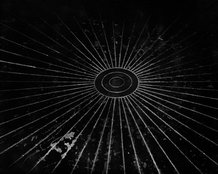 Texts2018Donald Kuspit - ARTFORUM
Texts2018Donald Kuspit - ARTFORUM Texts2018Ricardo Nicolau, Galeria Pedro Oliveira
Texts2018Ricardo Nicolau, Galeria Pedro Oliveira
 Texts2018Claudio Zecchi, CÃO – André Cepeda
Texts2018Claudio Zecchi, CÃO – André Cepeda
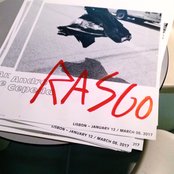 Exhibitions2017Rasgo, Cristina Guerra Contemporary Art Gallery
Exhibitions2017Rasgo, Cristina Guerra Contemporary Art Gallery
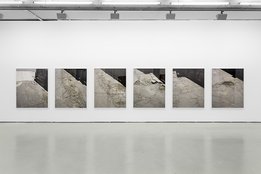 Texts2017Texto Pedro Llano
Texts2017Texto Pedro Llano 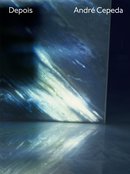 Books2016Depois
Books2016Depois  Texts2016At the base of vision text by Sérgio Mah
Texts2016At the base of vision text by Sérgio Mah Texts2016A History of Ruins and Ghosts by António Guerreiro
Texts2016A History of Ruins and Ghosts by António Guerreiro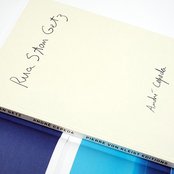 Books2015Rua Stan Getz
Books2015Rua Stan Getz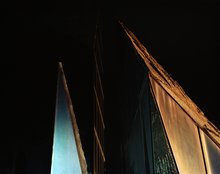 Work2015Depois
Work2015Depois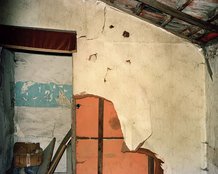 Texts2015Fade by Sérgio Mah
Texts2015Fade by Sérgio Mah Projects2014Untitled, Porto, 2014, 16 mm film, colour, 1’10’’
Projects2014Untitled, Porto, 2014, 16 mm film, colour, 1’10’’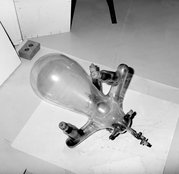 Projects2014Single, Mineral/Electricidade
Projects2014Single, Mineral/Electricidade Work2014Rua Stan Getz
Work2014Rua Stan Getz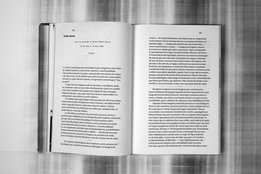 Texts2014Nothing by Delfim Sardo
Texts2014Nothing by Delfim Sardo Texts2014Say Nothing by Phillippe Azoury
Texts2014Say Nothing by Phillippe Azoury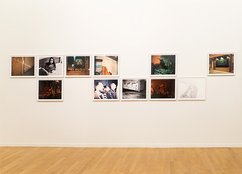 Projects2014Fade
Projects2014Fade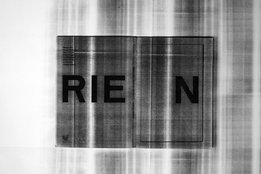 Books2014Rien Text Book
Books2014Rien Text Book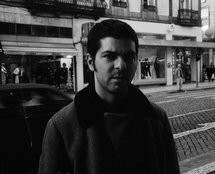 Projects2014Interview with Anna Meschiari (in French)
Projects2014Interview with Anna Meschiari (in French) Projects2014Exhibition views, Centro Cultural Vila Flor
Projects2014Exhibition views, Centro Cultural Vila Flor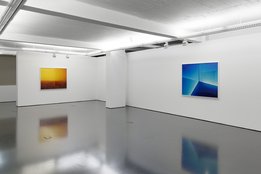 Projects2013Exhibition view, Galeria Pedro Cera
Projects2013Exhibition view, Galeria Pedro Cera Books2013Whispering Light/ Luz Sussurrada
Books2013Whispering Light/ Luz Sussurrada Texts2013Rien by Nuno Crespo
Texts2013Rien by Nuno Crespo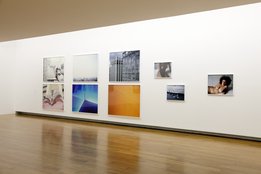 Texts2013Líneas abstractas by David Barro
Texts2013Líneas abstractas by David Barro 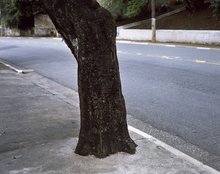 Texts2013São Paulo em corte by Agnaldo Farias
Texts2013São Paulo em corte by Agnaldo Farias Projects2013Lapa do Lobo
Projects2013Lapa do Lobo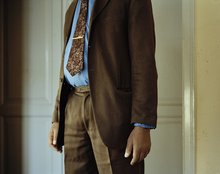 Projects2013Intendente
Projects2013Intendente Projects2013Super8 - HHY & The Macumbas, "Isaac, The Throat"
Projects2013Super8 - HHY & The Macumbas, "Isaac, The Throat" 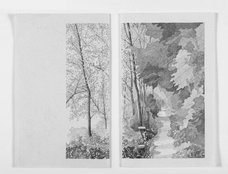 Books2012Canal
Books2012Canal Books2012Rien
Books2012Rien Projects2012Bandeiras, 2011, 16 mm film, colour, 1’10’’
Projects2012Bandeiras, 2011, 16 mm film, colour, 1’10’’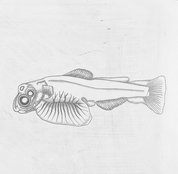 Projects2012LP - L'Histoire de La Croquette
Projects2012LP - L'Histoire de La Croquette Texts2012Rien by Rémi Coignet
Texts2012Rien by Rémi Coignet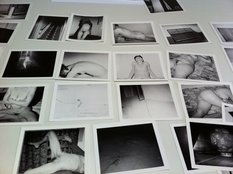 Work2012Rien
Work2012Rien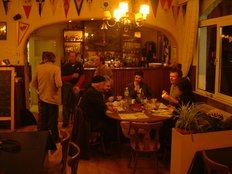 Projects2012Entrevista para abitpixel (in portuguese)
Projects2012Entrevista para abitpixel (in portuguese) Texts2012rien – nier - rein by Regina Guimarães
Texts2012rien – nier - rein by Regina Guimarães Projects2010Couple, Porto, 2009, 16 mm film, colour, 1’25’’
Projects2010Couple, Porto, 2009, 16 mm film, colour, 1’25’’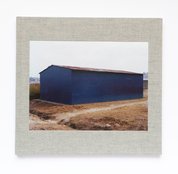 Books2010Ontem
Books2010Ontem Texts2010Intuited breathing by Miguel von Hafe Pérez
Texts2010Intuited breathing by Miguel von Hafe Pérez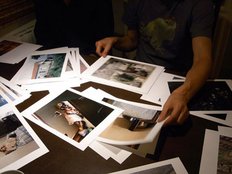 Texts2010Interview with Jean-Louis Godefroid
Texts2010Interview with Jean-Louis Godefroid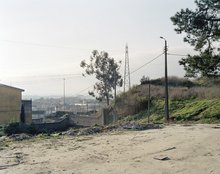 Work2010Ontem
Work2010Ontem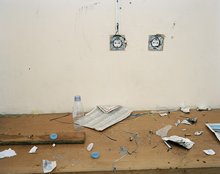 Texts2010Ontem to Foam Magazine by Sebastian Arthur Hau
Texts2010Ontem to Foam Magazine by Sebastian Arthur Hau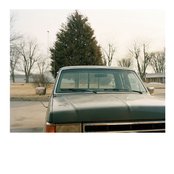 Projects2009LP River
Projects2009LP River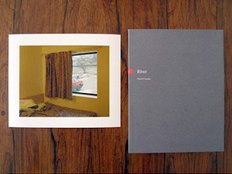 Books2009River
Books2009River Projects2008Exhibition views, Galeria ZdB
Projects2008Exhibition views, Galeria ZdB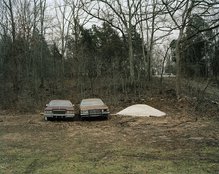 Projects2008River
Projects2008River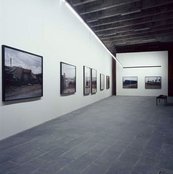 Texts2007what does the word ‘landscape’(...) by Delfim Sardo
Texts2007what does the word ‘landscape’(...) by Delfim Sardo Texts2006Moving by Johan Vonck
Texts2006Moving by Johan Vonck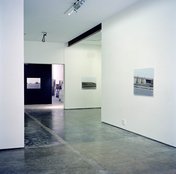 Texts2006Sleepwalking Images by Miguel von Hafe Pérez
Texts2006Sleepwalking Images by Miguel von Hafe Pérez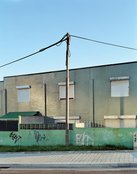 Projects2006Moving
Projects2006Moving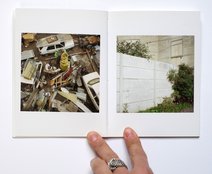 Books2005Anacronia
Books2005Anacronia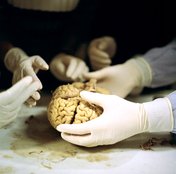 Texts2003Anacronia by Frits Gierstberg
Texts2003Anacronia by Frits Gierstberg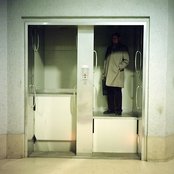 Texts2000Anacronia by Jean-Louis Godefroid
Texts2000Anacronia by Jean-Louis Godefroid Projects2000Anacronia
Projects2000Anacronia